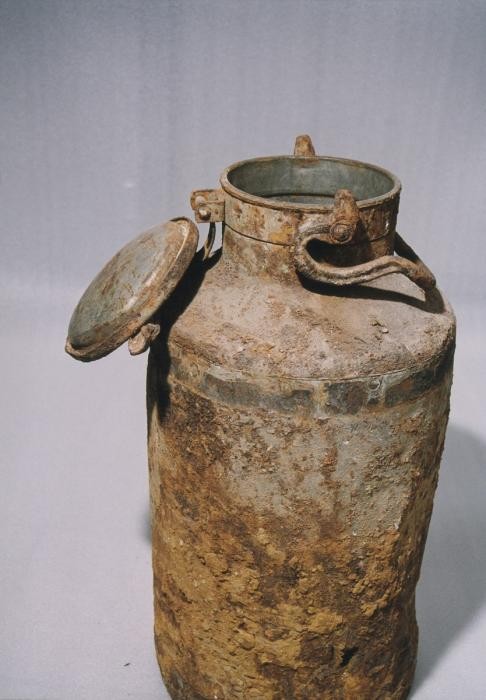
One of the two milk cans in which portions of the Ringelblum Oneg Shabbat archives were hidden and buried in the Warsaw ghetto. The milk cans are currently in the possession of the Jewish Historical Institute in Warsaw.
Item View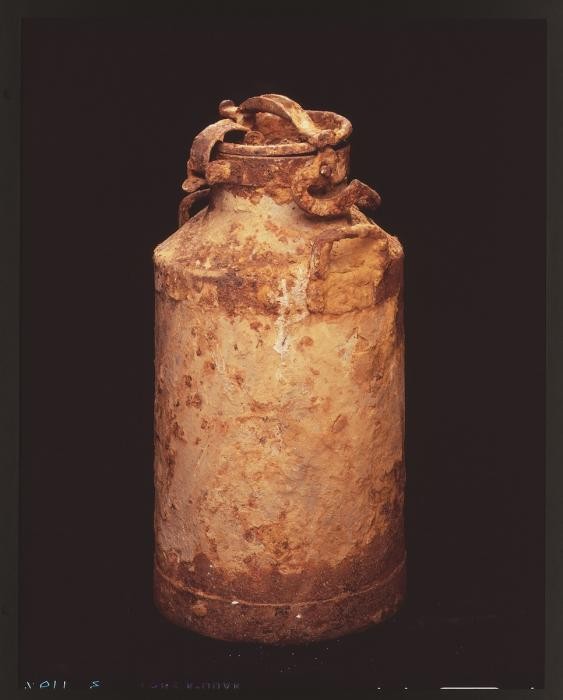
One of the milk cans used by Warsaw ghetto historian Emanuel Ringelblum to store and preserve the secret "Oneg Shabbat" ghetto archives.
This milk can, identified as no. 2, was unearthed at 58 Nowolipki Street in Warsaw on December 1, 1950.
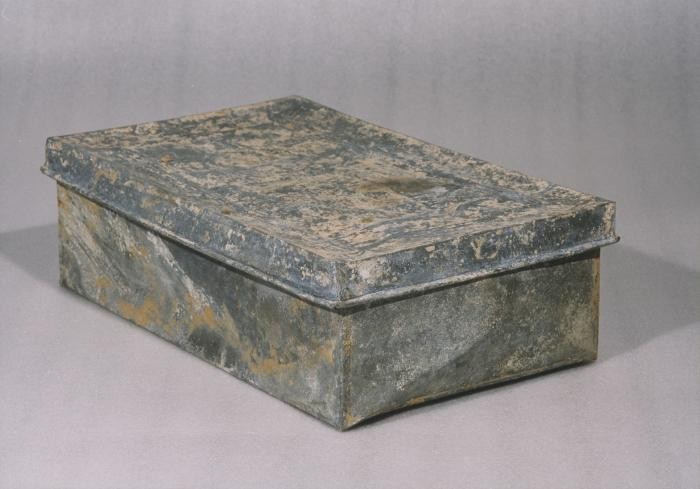
One of the ten metal boxes in which portions of the Ringelblum Oneg Shabbat archives were hidden and buried in the Warsaw ghetto. The boxes are currently in the possession of the Jewish Historical Institute in Warsaw.
Item View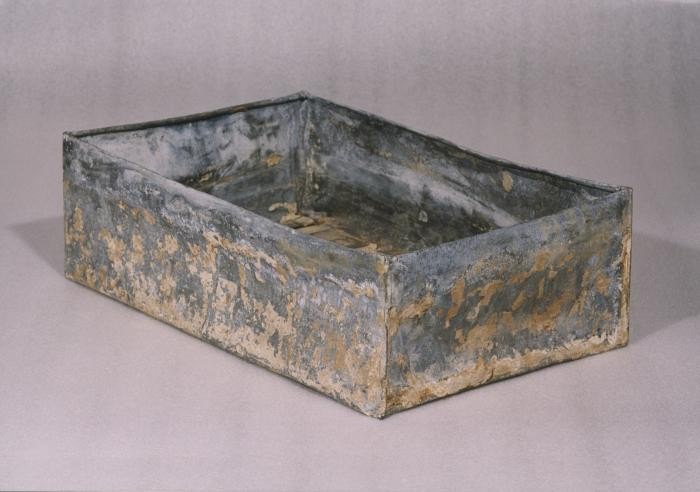
One of the ten metal boxes in which portions of the Oneg Shabbat archive were hidden and buried in the Warsaw ghetto. The boxes are currently in the possession of the Jewish Historical Institute in Warsaw. This view is of an open box without the lid.
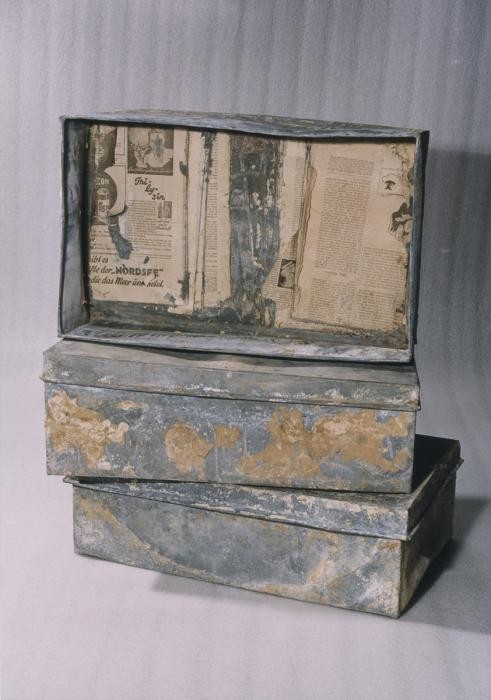
Three of the ten metal boxes in which portions of the Oneg Shabbat archive were hidden and buried in the Warsaw ghetto. The boxes are currently in the possession of the Jewish Historical Institute in Warsaw. In this view the three boxes are stacked on top of one another. The box on top is displayed on its side without the lid.
Item View
Portrait of Rabbi Shimon Hoberband, who was involved in the activities of Emanuel Ringelblum's Oneg Shabbat archives in the Warsaw ghetto.
Item View
We would like to thank Crown Family Philanthropies, Abe and Ida Cooper Foundation, the Claims Conference, EVZ, and BMF for supporting the ongoing work to create content and resources for the Holocaust Encyclopedia. View the list of donor acknowledgement.